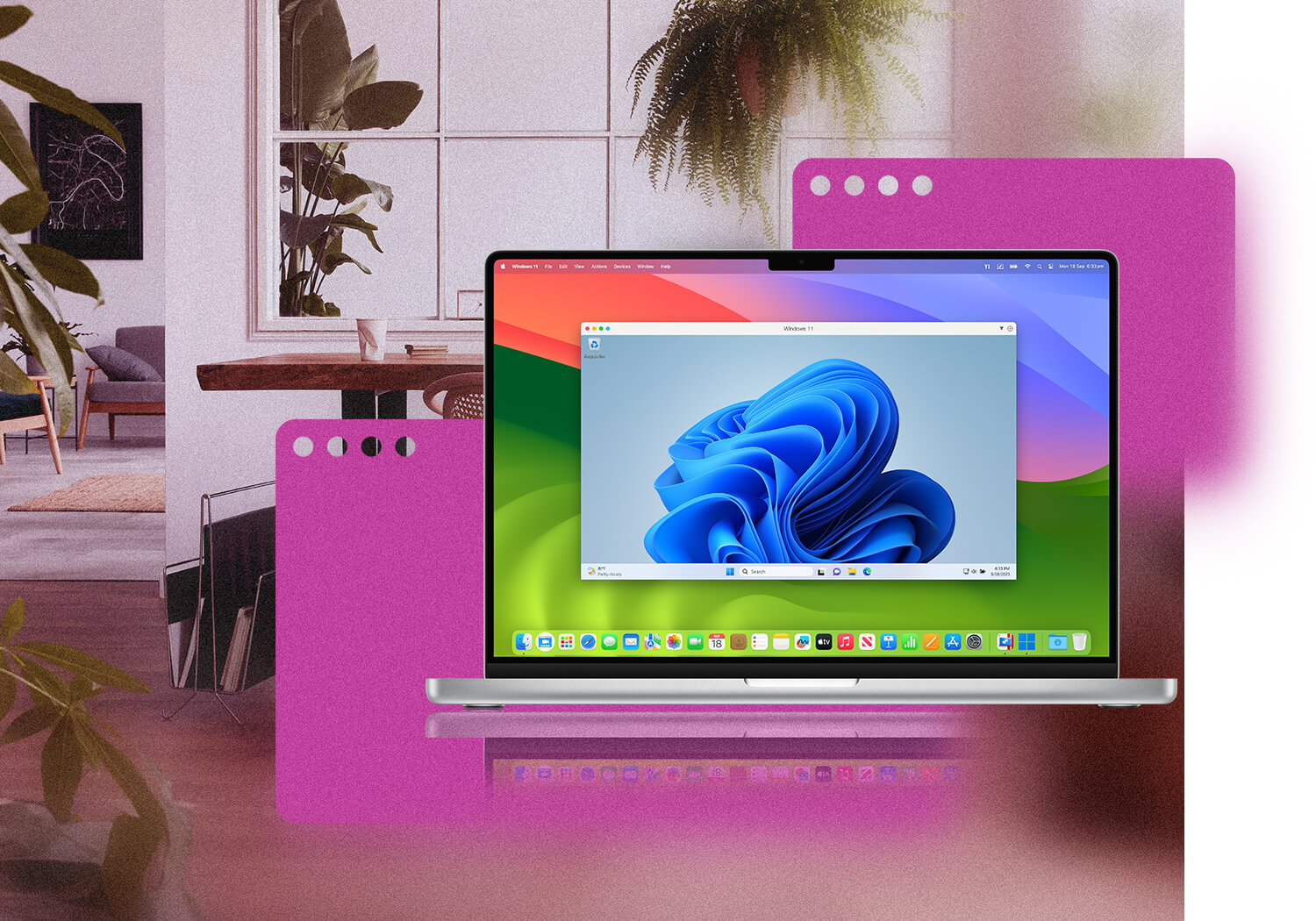
Professionals and businesses alike increasingly demand the flexibility to harness the power of multiple operating systems without sacrificing performance or productivity. Parallels is a leading virtualization solution that enables Mac users to run Windows and other operating systems concurrently on a single device. This innovative technology truly delivers “the best of both worlds,” unlocking dual-OS innovation that has become essential for developers, creative professionals, and business users in 2025.
Bridging Two Worlds: The Need for Dual-OS Innovation
Modern work environments have evolved beyond the boundaries of a single operating system. Many users favor macOS for its design, stability, and ecosystem, yet rely on Windows for specialized applications, enterprise software, or even legacy systems. For instance, a graphic designer might prefer macOS for creative applications, while needing Windows-only software for project management or compatibility with client systems. In business, the ability to test and deploy software across both platforms is no longer a luxury but a competitive necessity. Parallels addresses this growing need by seamlessly integrating Windows within macOS, thus eliminating the need for dual machines or cumbersome dual-boot setups.
How Parallels Works
At its core, Parallels Desktop employs advanced virtualization technology that creates a virtual machine (VM) within your Mac. This VM runs a full installation of Windows (or another OS), which behaves as if it were installed on native hardware. Unlike traditional dual-boot configurations that require a reboot to switch between systems, Parallels allows users to run Windows and macOS side by side, with smooth transitions between the two environments. This integration is powered by a hypervisor—a thin layer of software that allocates hardware resources (such as CPU, memory, and storage) efficiently between macOS and the virtualized operating system.
Key features include:
- Seamless Integration: Users can drag and drop files between macOS and Windows, share clipboards, and even launch Windows applications directly from the Mac dock.
- Performance Optimization: Parallels leverages hardware acceleration and fine-tuned resource management to ensure that both operating systems run smoothly without significant lag.
- Customizable Settings: Advanced users can tweak CPU allocation, memory limits, and storage options for the virtual machine, optimizing performance based on the task at hand.
- Security Isolation: Running Windows in a VM adds an extra layer of security, isolating the guest operating system from macOS. This separation can protect sensitive macOS data even if the virtualized environment becomes compromised.
Enhancing Productivity Through Dual-OS Capability
For professionals who depend on a diverse set of applications, dual-OS innovation offers a remarkable productivity boost. Consider the following scenarios:
- Developers and Testers: Software developers often need to test applications across multiple operating systems to ensure compatibility. With Parallels, they can run Windows-specific development tools alongside macOS-native applications, all on the same device, without the hassle of maintaining multiple physical machines.
- Creative Professionals: Designers and video editors benefit from the robust creative tools available on macOS, yet sometimes need access to Windows-only plugins or proprietary software used by clients. Parallels removes the friction between these ecosystems, streamlining the creative process.
- Business Users: In a corporate environment, employees might require Windows applications for certain business processes, such as specialized enterprise resource planning (ERP) software, while preferring macOS for its user-friendly interface and integration with other creative tools. By unifying both environments, Parallels ensures that businesses can maintain a high level of operational efficiency.
- Gamers: Although not traditionally a professional use case, many gamers appreciate the ability to play Windows-exclusive games on their Macs without compromising the performance or aesthetics of macOS.
The ability to run two operating systems concurrently not only enhances individual productivity but also drives innovation in cross-platform software development, testing, and support.
Real-World Use Cases: Success Stories with Parallels
Across various industries, Parallels has proven its value by enabling seamless dual-OS workflows. For example, a multinational corporation might deploy Parallels on executive Mac laptops so that employees can access critical Windows-based enterprise applications while enjoying the robust ecosystem and sleek design of macOS. This dual functionality means IT departments can standardize on a single hardware platform, reducing support costs and simplifying asset management.
Similarly, startups and small businesses have embraced Parallels to bridge the gap between cost efficiency and technological versatility. Rather than investing in separate devices for Mac and Windows applications, companies can equip their teams with a single Mac machine running Parallels, thereby lowering capital expenditure while boosting operational agility.
The Evolution of Parallels and Future Trends
Since its inception, Parallels has continuously evolved to meet the demands of a shifting technological landscape. Early versions provided basic virtualization capabilities, but over time the software has grown to include deep integration features, enhanced performance optimization, and extensive support for various operating systems. As we look to the future, several trends will likely shape the ongoing development of Parallels:
- Enhanced AI Integration: Future iterations may leverage artificial intelligence to optimize resource allocation dynamically or provide predictive maintenance alerts, ensuring even smoother performance.
- Greater Cross-Platform Support: While currently focused on macOS and Windows, future versions might extend more robust support to Linux distributions and even mobile operating systems, further broadening the scope of dual-OS innovation.
- Cloud-Based Virtualization Options: As cloud computing continues to mature, we might see hybrid models where virtual machines can be managed both locally and in the cloud, offering unparalleled flexibility for distributed workforces.
- Improved Security Features: With cyber threats evolving rapidly, the need for fortified security measures in virtual environments will drive further innovation in isolating and protecting data across multiple operating systems.
By continuously innovating, Parallels is not just keeping pace with technological change—it is actively shaping the future of dual-OS computing, ensuring that businesses remain agile and competitive in a digital-first world.
The Competitive Edge of Dual-OS Innovation
In today’s increasingly interconnected environment, the ability to harness the strengths of both macOS and Windows offers a clear competitive advantage. Businesses that adopt dual-OS solutions can optimize their workflows by accessing the best applications and tools from both ecosystems. This flexibility is crucial in a market where rapid adaptation and continuous innovation are essential for survival.
Moreover, by consolidating computing environments into a single, unified device, companies can reduce hardware redundancy and simplify IT management. This streamlined approach not only cuts costs but also minimizes the potential points of failure in a company’s infrastructure—an essential factor for maintaining high levels of productivity and reliability.
Conclusion
In a world where digital transformation is accelerating at breakneck speed, the ability to seamlessly integrate multiple operating systems is no longer a luxury but a necessity. Parallels stands out as the tool that unlocks dual-OS innovation, empowering users to enjoy the best of both macOS and Windows without compromise. Its advanced virtualization technology, comprehensive integration features, and focus on performance optimization make it the go-to solution for professionals and businesses seeking to future-proof their computing environment in 2025.
Whether you’re a developer needing to test cross-platform applications, a creative professional looking to leverage diverse software tools, or a business leader striving for operational efficiency, Parallels provides the flexibility and power required to excel in a competitive digital landscape. As we continue to navigate the complexities of modern technology, embracing dual-OS innovation with Parallels will undoubtedly be a strategic asset—ensuring that you truly experience the best of both worlds.





